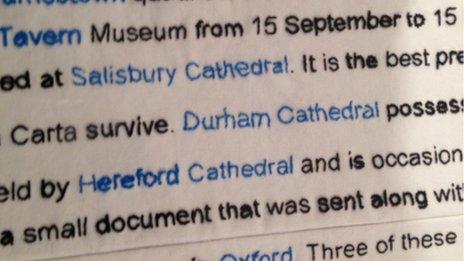Hand-sewn Wikipedia page marks Magna Carta anniversary
- Published
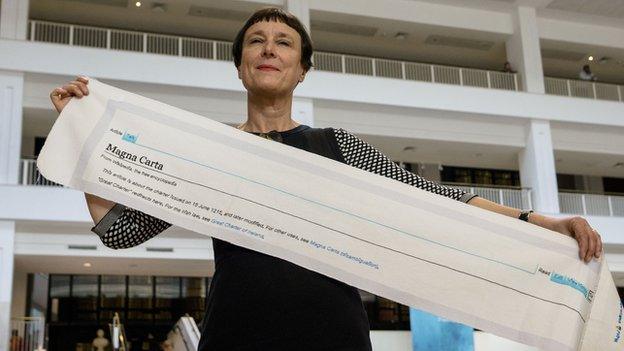
Cornelia Parker with a fragment of Magna Carta (An Embroidery) at the British Library
It's the Wikipedia entry no-one will ever be able to update.
A giant embroidered copy of the article for the Magna Carta - measuring 13 metres long - has been unveiled at the British Library.
Some 200 people - from prisoners to pop stars - hand-stitched the artwork, which celebrates the 800th anniversary of the Magna Carta.
"I wanted to create a portrait of our age", said British artist Cornelia Parker, who conceived the project.
Parker, best known for art installations involving an exploded garden shed and actress Tilda Swinton sleeping in a glass case, took a screenshot of the Magna Carta Wikipedia page on 15 June last year - on what was the 799th anniversary of the famous 13th Century treaty.
She printed it onto fabric which was divided into 87 sections and sent around the country to be stitched by 200 specially-chosen people - many with a connection to civil liberties and politics.
"I liked the idea of grabbing this moment and immortalising it," Parker told the BBC at Thursday's launch event.
"Wikipedia is a kind of embroidery, it's very subjective with many contributions and anybody can add their bit."
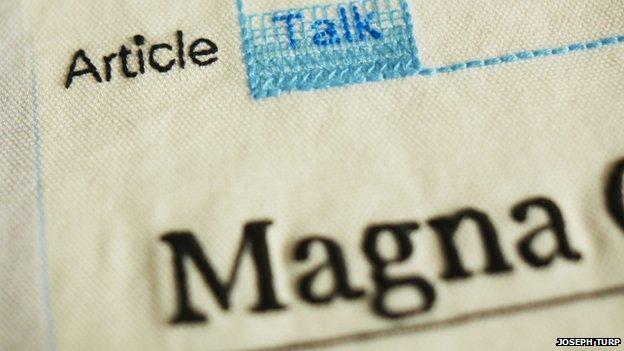
Fragment from the top of the Magna Carta artwork
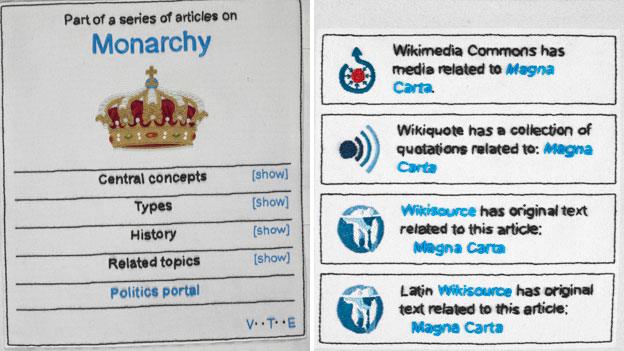
Close-ups of panels from Magna Carta (An Embroidery)
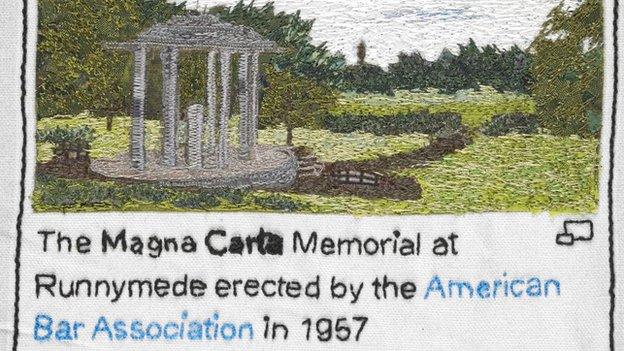
Magna Carta Memorial, stitched by Jill Hazell, Embroiderers’ Guild (South West Region)
The bulk of the text was sewn by prisoners while the intricate pictures were handled by highly-skilled members of the Embroiderers' Guild.
"I've had letters from prisoners who said they'd been happy to be involved in something historical rather than sewing cushion covers," said Parker.
The full list of contributors was revealed on Thursday. Each stitched a word or phrase significant to them.
Among the famous names who gave their time with a needle were Antony Gormley, Brian Eno, Caitlin Moran, Edward Snowden, Germaine Greer, Jarvis Cocker, Julian Assange, Mary Beard, Philip Pullman and Baroness Shirley Williams.
Wikileaks founder Assange embroidered the word "freedom" in the Ecuadoran embassy in London where he has been living since 2012 to avoid extradition.
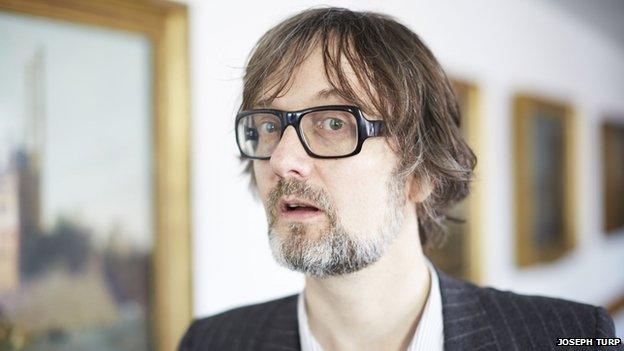
Jarvis Cocker stitched the words Common People
Fugitive US intelligence leaker Snowden embroidered "Liberty" in Moscow.
Musician Eno wrote "in perpetuity", while author Pullman wrote "Oxford" - where he set the opening of the His Dark Materials trilogy.
Clive Stafford Smith, the human rights lawyer, made his contribution at Guantanamo Bay detention camp because he was there with one of clients.
And Jarvis Cocker's handiwork spelt "Common People" - the title of his band Pulp's 1995 hit song.
Jimmy Wales, founder of Wikipedia, said: "Cornelia Parker's Magna Carta (An Embroidery) takes shared onscreen content back into the world of physical things. It's a unique project, and one of the least expected things to come out of Wikipedia!"
Parker, who was shortlisted for the Turner Prize in 1997, also revealed that the giant embroidery featured a tea stain and a spot of blood.
"One prisoner spilt some tea on a section that I then sent to the American Embassy to be embroidered by the ambassador."
The blood is from Guardian editor Alan Rusbridger who pricked his finger while sewing.
"He texted me to say there is blood on the tapestry," Parker said. "But I replied 'that's fine - I don't mind a few stains.'"
Magna Carta (An Embroidery) is on display from 15 May to 24 July at the British Library.

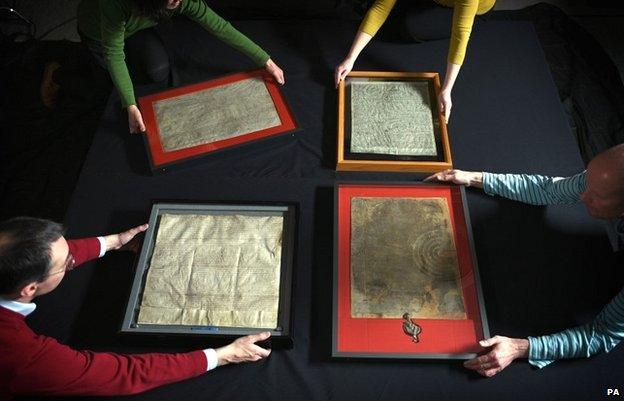
The four surviving 1215 Magna Cartas were reunited at the British Library earlier this year
What was Magna Carta?
The Magna Carta, sealed by King John on 15 June 1215, is considered a cornerstone of the British constitution.
It included the principle that no-one was above the law, including the King.
It charted the right to a fair trial, and limits on taxation without representation
It inspired a number of other documents, including the US Constitution and the Universal Declaration of Human Rights
Only three clauses are still valid - the one guaranteeing the liberties of the English Church; the clause confirming the privileges of the City of London and other towns; and the clause that states that no free man shall be imprisoned without the lawful judgement of his equals

- Published1 January 2015
.jpg)
- Published13 May 2015
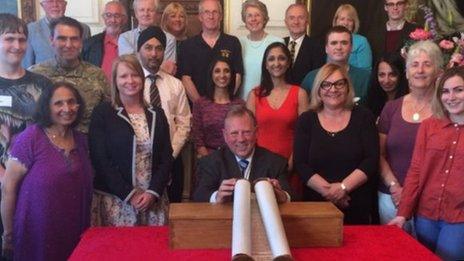
- Published21 April 2015
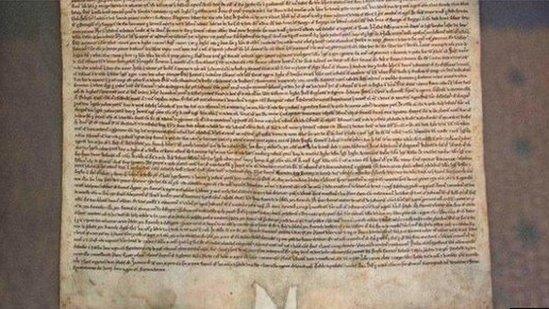
- Published1 March 2011
